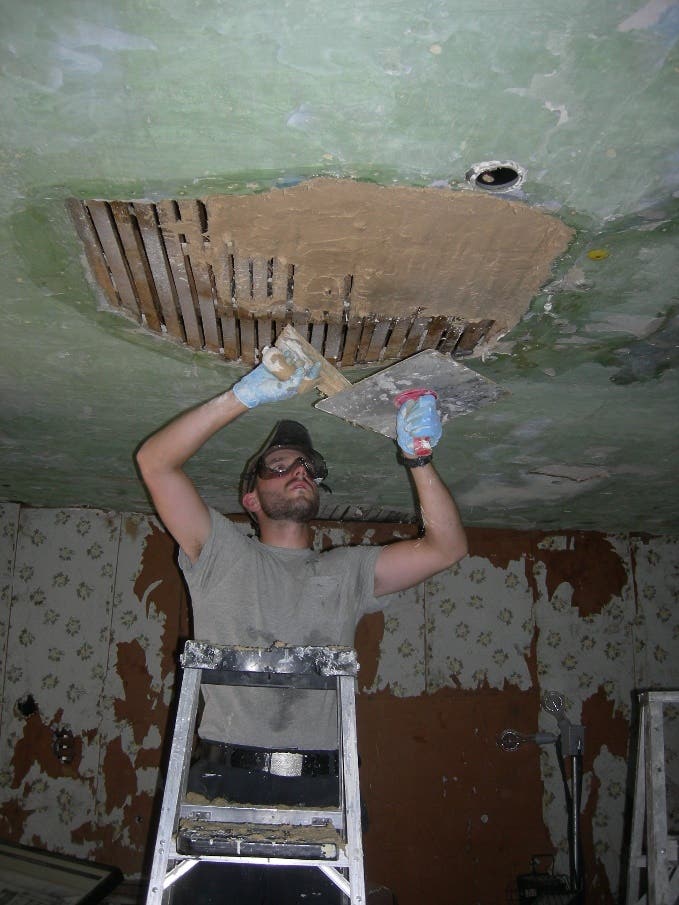
Judy Hayward
Materials and UNESCO
I am writing this the day after the US State Department announced that it will withdraw from UNESCO -- the international agency that sponsors the world heritage site list. It is also the day after the Plaster 101 webinar offered through the Traditional Building Conference Series online education program. So what does one have to do with the other? Quite a lot actually.
Patrick Webb, plasterer and educator, offered a complete overview of the chemistry of plaster. As I moderated the webinar and listened to Patrick’s clear explanation of plasters whether gypsum, clay or lime-based, I reflected on the science that underlies the use of these traditional building materials. Their inherent sustainability has made them materials of choice for many civilizations for thousands of years. Plasters are easily repaired and refreshed if there is minor cracking. They are easy to use whether applied or cast. Plaster is beautiful and that may be the reason we preserve it and continue to use it but science underlies the beauty and craft.
For example, the lime cycle – from its natural state, calcium carbonate is crushed and burned; water or other liquids are added to bring it to its fluid state when its application is made; then the finished product moves from off-gassing carbon dioxide or reabsorbing carbon dioxide depending on where the material is in its life cycle. In all its forms, plaster is useful for aesthetics, sacrificial coatings, permanent structure, acoustical performance, and more. Do you marvel that our ancestors were so adept at using these materials and that they left us a legacy of building craft traditions and sites that deserve our protection? I do. It is the legacy of traditional building materials that brings us back to world heritage.
United Nations Educational, Scientific and Cultural Organization
UNESCO (United Nations Educational, Scientific and Cultural Organization) has offered the world a process to cooperate with shared scientific and cultural interests since the 1972 World Heritage Convention, although efforts at such cooperation began as early as the aftermath of World War One. I believe this kind of cooperation is the best kind of diplomacy. UNESCO fosters peer to peer cooperation on scientific endeavor. World Heritage Sites benefit from increased tourism and the resulting heightened awareness of their value leads to efforts to preserve them.
The practical implications of an effort by the world to preserve its shared patrimony include the ability to share conservation science to better understand how building materials perform and how to protect, preserve and conserve them and the capacity to test and share scientific data. The ability to share in the preservation of man-made monuments and natural sites that are part of the humanity’s cultural patrimony gives us a path for cooperation with other nations.
The US needs to maintain its seat at the table and not as a “nonmember observer.” You can read the US State Department Press Release regarding UNESCO to draw your own conclusions but for me, walking away from the table as a full member is a blow to historic preservation in the US and throughout the world that we must not accept.
Judy L. Hayward is executive director of Historic Windsor, Inc. and its Preservation Education Institute based in Windsor, Vermont. She is also the education director for the Traditional Building Conference Series. Email Judy at jhayward@aimmedia.com.
Judy L. Hayward spends her days pursuing a passion for historic architecture and the ways in which it can be reused to sustain and grow healthy communities. She develops courses in partnership with builders, architects, traditional craftspeople and others to teach both historic preservation and traditional building skills. She has one foot in the nonprofit world as executive director of Historic Windsor and the Preservation Education Institute and the other foot in the world of media and information services as education director for the Traditional Building Conference Series and Online Education Program.








